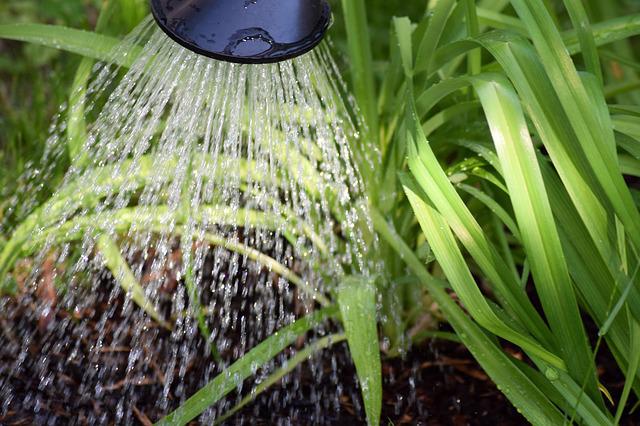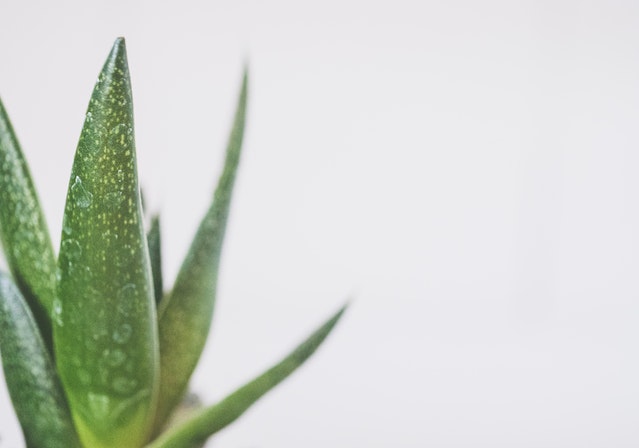Aloe plants are typically easy to grow, and they can be not only a beautiful addition to any home or garden, but can also be used as a medicinal plant for your skin, hair, and even your diet.
Of course, successfully growing an aloe plant does take some maintenance and knowledge and many people end up over watering their aloe plant. So let’s find out how an overwatered aloe plant look like?
An overwatered aloe plant often has soggy leaves, brown spots, yellowing or soft stems, and the soil itself may appear moldy. Sometimes the leaves will be so soft that they fold downwards, but more often than not, it is simply little patches of squishy along an otherwise healthy plant.
It’s important to note that overwatering can also lead to root rot, which can be fatal for your aloe plant. If you notice any signs of root rot, such as a foul smell or black, mushy roots, it’s important to take immediate action to save your plant.
If you want to learn a little more about how to tell if you are overwatering your aloe plant, how much water the plant actually needs to thrive, and what to do if you have overwatered your plant, keep reading! We have everything you need to know about watering your aloe plant right here!
Understanding the Watering Needs of Aloe Plants
To properly care for your aloe plant and avoid overwatering, it is crucial to understand its watering requirements. Aloe plants are similar to cacti and succulents, thriving in arid conditions with minimal water intake.
They have specialized leaves and root systems that enable them to store water for long periods. Understanding that aloe plants do not need frequent watering is the first step towards preventing overwatering and maintaining their health.
What Does an Overwatered Aloe Plant Look Like?

As you now know, there are a few very clear signs that you have overwatered your aloe plant:
- The leaves are soggy, either all over or just in small sections.
- The stems are yellow or soft to the touch.
- The leaves have brown spots.
- The soil is moldy.
Most aloe plant owners see these signs at some point because overwatering an aloe plant is a fairly common mistake. So if you think you have overwatered your aloe plant, don’t worry, you are not alone.
Here’s the thing, aloe plants are similar to cacti and succulents and they really don’t need much water. In fact, you can even go on a weekend getaway and forget to water your aloe plant and it will be just fine.
Most people tend to overwater their aloe plants rather than underwater them, but luckily, even if you have a heavy hand and have overwatered your aloe plant and you see one or more of the signs listed above, you can fix it!
How to Not Overwater an Aloe Plant
The best way to keep an aloe plant healthy and happy is to simply not overwater it. In order to do so, here is exactly how to take care of an aloe plant so as not to overwater it!
Choose a pot with drainage holes. Even if your aloe plant lives indoors, you should still opt for a pot with small holes at the bottom to release unwanted moisture from the soil. You can place the pot on a saucer or plate which will catch the excess water.
Always empty the saucer of water. Although it probably doesn’t need to happen daily, there should never be residual water just sitting in the saucer under the pot. So make it a habit to check and empty it a few times a week.
Use potting soil made for succulents. It should be available at almost every gardening store, and it is the best choice because it dries faster than regular soil, ensuring the water does not sit in the soil too long.
Only water your aloe plant when the soil feels dry. Remember, aloe plants are like succulents; they do not need a lot of water. A good rule of thumb is to only to water your aloe plant when the soil is completely dry.
Place your aloe plant in direct sunlight. Just like in the desert, these plants love sunlight. If your aloe plant lives indoors, make sure to put it on a window-sill, preferably facing south or southwest for optimal sunlight.
If you preemptively follow these instructions, it is unlikely that your aloe plant will become overwatered and show the unfortunate side effects listed above.
However, if your aloe plant is already looking quite sad due to overwatering, we have a few solutions here that can bring your plant back to life!
What To Do if You Overwatered Your Aloe Plant

Alright, so you found this article too late, and you have already overwatered your aloe plant. That’s okay! All is not lost, and you can very much bring your plant back to life.
Remember, if you have overwatered your aloe plant, it will probably have soft spots, brown spots, yellowing, soft stems, or moldy soil.
If you see one or more of these signs, it’s time to try to save your aloe plant. The good news is, all you need to do is follow these simple instructions:
Gently remove any leaves or stems that look discolored or are soft and mushy.
Remove the plant from its pot.
Look for signs of root rot, i.e. they are discolored and black or brown or are soggy.
If some of the roots have rotted, cut them off with clean scissors. Make sure to clean the blades between each cut so the disease doesn’t spread.
If the root rot is severe, you will want to disinfect the remaining roots with a 3% hydrogen peroxide spray. It is also good practice to clean the new pot with this solution.
Prepare a new pot with drainage and succulent soil and replant it!
Hopefully, your aloe plant will be just fine. Unfortunately, if the root rot is too invasive, there is a chance it won’t regrow properly, but there is always a chance!
Also read: What Does An Overwatered Lily Look Like?
The Bottom Line
So, what does an overwatered aloe plant look like? You know the answer to that now!
But just in case you forgot: it will probably have soft spots, brown spots, yellowing, soft stems, or moldy soil.
Now you know what signs to look for to find out if your aloe plant has been overwatered, how to properly set your aloe plant up for success, and what to do if you have overwatered it and want to save the plant!
Frequently Asked Questions
How often should I water my aloe plant?
You should only water your aloe plant when the soil is dry. That usually means once every two to three weeks from May-September and even more sporadically from September to April. When it comes to aloe plants, less water is far better than too much water, so when in doubt, skip watering.
How can I tell if my aloe plant needs water?
It’s quite easy to tell if your aloe plant needs water. All you need to do is press your fingers down into the soil about an inch or two deep. If the soil is damp or wet, your aloe plant does not need water, if it is dry or even mostly dry, it does! However, if it does need water, make sure not to saturate the soil.
Do aloe plants need direct sunlight?
Yes, aloe plants need direct sunlight. In fact, to succeed, your aloe plant should get at least 6 hours of direct sunlight every day. If your aloe plant lives inside your home, it’s best to place it on a south or southwest facing windowsill for the best direct sunlight.

Hey, I’m Lisa and I’ve been an avid gardener for over 30 years. I love writing, talking and living in the garden! Feel free to connect with me on my socials below

